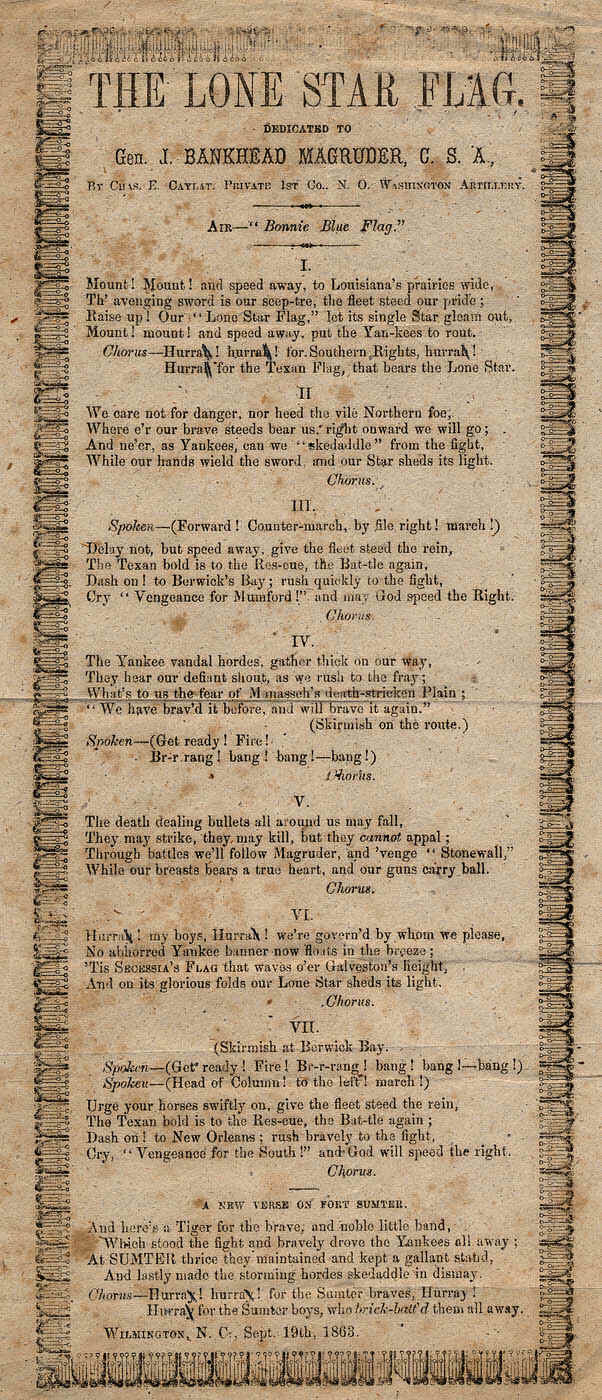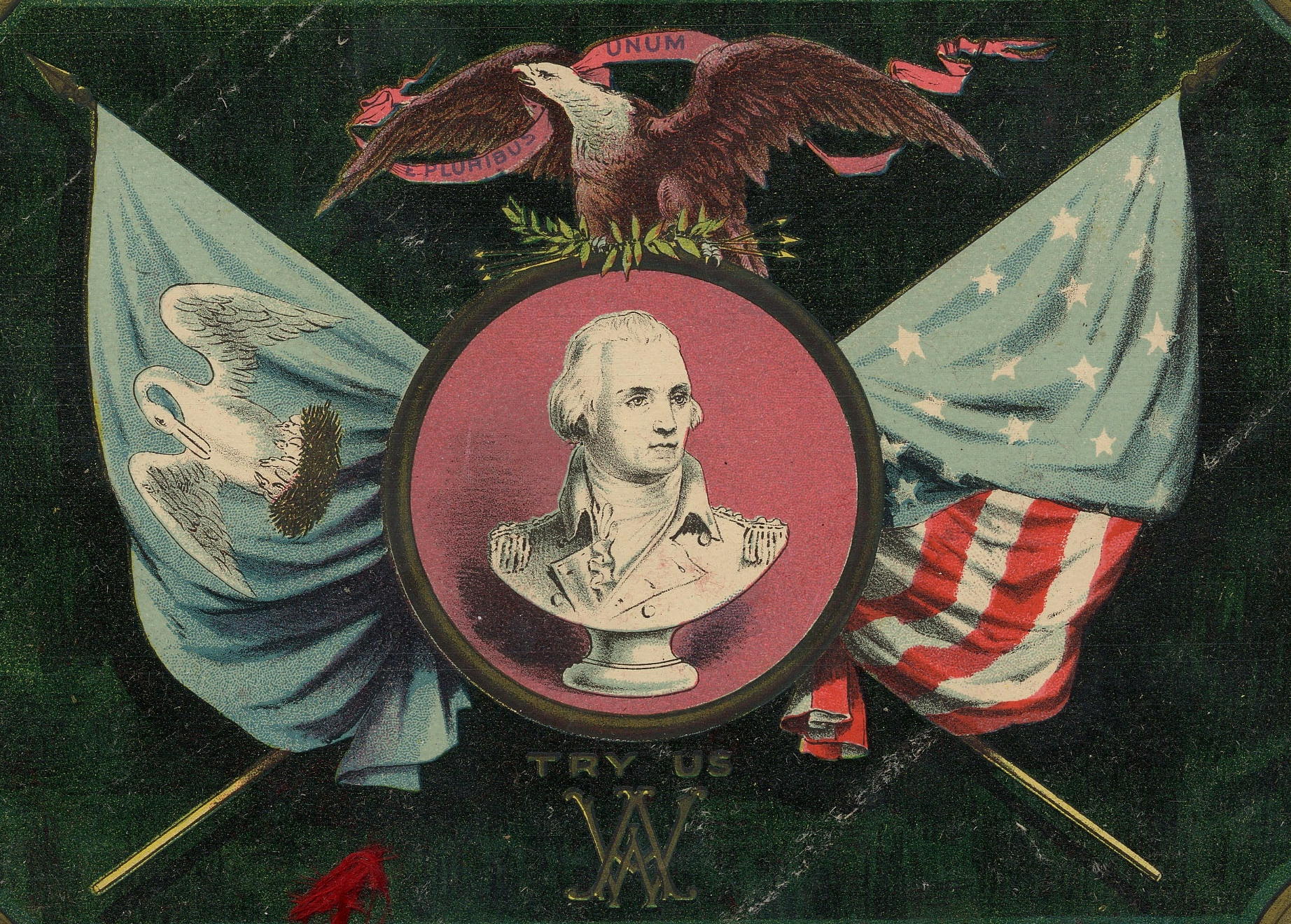The Lone Star/Bonnie Blue Flag
The
“Bonnie Blue Flag” (also known as the "Lone Star Flag") is often
linked to the Confederacy. However, the flag had its origins long before any
southern state seceded from the Union. The first recorded use of this flag was
in 1810 when it was used to represent the Republic of West Florida, a republic
of English speaking inhabitants of southern Alabama, Mississippi, and portions
of Louisiana east of the Mississippi River who rebelled against the reign of
Spanish government and overthrew Spain’s provincial Governor de Lassus at
Baton Rouge. The republic lasted barely three months, dissolved after the
annexation of Louisiana’s portion of the disputed land to the United States
territory.
A flag with a single star showed up again
later
to represent the Republic of Texas, which adopted a lone
star variation for its
official flag in 1839.
But it was the “Lone Star” flag’s use
by Mississippi following that state’s first week of secession from the Union
in 1861 that linked the flag forever to the Confederacy. Irish-born actor Harry
McCarthy witnessed the raising of the blue secession flag over Mississippi and
was inspired enough to pen a song entitled “The Bonnie Blue Flag,” linking
the flag forever to the Confederacy. When the song was first played in New
Orleans before a mixed audience of Texans and Louisianans, it was received with
an outburst of approval that was nearly riotous. The song became one of the most
popular songs of the Confederacy, second only to “Dixie.” The popular tune
had many versions, with troops substituting its original lyrics. The printed
handout below shows one such example written by a member of the Washington
Artillery, entitled The Lone Star Flag.
In this version of the song, the “Lone Star Flag” refers to both the Texan
and Confederate independence flags and praises Confederate General John Bankhead
Magruder, commander of the District of Texas, who recaptured the city of
Galveston from Federal authorities.
The symbolism of the Lone Star is
independence and was used often during the 19th Century in the southern United
States.
Its blue field
represented truth upon which was placed a single white star, representing
purity. It was displayed originally in West Florida’s independence from Spain,
later in Texas’ independence from Mexico, and at the outbreak of the War
Between the States, in the South’s attempted independence from the United
States. The Lone Star was looked upon by many Southerners as a reversal of the
US Flag Act of 1818, which allows a new star to be added to its flag on the 4th
of July following the admission of any new State to the Union. Hence, Southern
States looked at the single star flag as "taking their star out of the
Union".


HOME